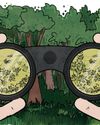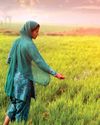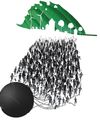
SOME LIFESAVING solutions are so simple and obvious that they remain hidden in plain sight. This is particularly true for livestock disease treatments that have evolved over generations through experiences of communities, withstood the test of time, are embodied in local culture and practices and yet, the knowledge remains untapped in the absence of standardisation and scientific validation. More often than not, dairy farmers, and some field veterinarians, indiscriminately use antibiotics for treating even common infections in animals.
Researchers with Delhi-based Centre for Science and Environment (CSE) found evidence of such rampant misuse and overuse of antibiotics in 2020 and 2021, during consultations with dairy farmers and experts from various sectors such as animal husbandry, food safety, human health. They had observed that most dairy farmers skip the critical withdrawal period-a prescribed number of days during which the treated animal should be excluded from the milk supply chain to allow antibiotic residues to be excreted out of its body. In 2018, the Food Safety and Standards Authority of India (FSSAI) had also found antibiotic residues in milk samples.
Such abuse of antibiotics not only adds to the treatment costs, but also increases the burden of antimicrobial resistance (AMR). Interaction between antibiotic residues and pathogens in various environmental matrices (soil and water) and in living organisms can lead to formation and spread of bacteria that are resistant to antibiotics. A comprehensive global study published in peer-reviewed journal The Lancet in January 2022, estimates that infections caused by these antibiotic-resistant bacteria played a part in the deaths of 4.95 million people in 2019 alone.
This story is from the {{IssueName}} edition of {{MagazineName}}.
Start your 7-day Magzter GOLD free trial to access thousands of curated premium stories, and 9,000+ magazines and newspapers.
Already a subscriber ? Sign In
This story is from the {{IssueName}} edition of {{MagazineName}}.
Start your 7-day Magzter GOLD free trial to access thousands of curated premium stories, and 9,000+ magazines and newspapers.
Already a subscriber? Sign In

On shaky ground
Despite reporting net gains in green cover, the latest forest survey shows degradation of natural forests, particularly in ecologically sensitive hotspots

Burden of proof
The government's drive for e-KYC verification to ensure rightful targeting of beneficiaries has proved exclusionary for many

Rupee slide impacts agricultural trade
THE UNION Cabinet on January 1, 2025, approved the extension of a subsidy package of ₹3,500 per tonne on di-ammonium phosphate (DAP) for companies.

THE 500 GW SWITCH OVER
Coal is the king of energy at present. India needs to dislodge it with clean energy for an equitable green transition

MANIFESTING 500 GW
Ensure that renewable energy is available round the clock.Establish a viable market and reward those who take lead

Lifting a curse
How Gangabai Rajput helped her water-scarce village in Madhya Pradesh let go of superstition and revive an ancient waterbody

HOLD THEM SACRED
The Supreme Court has recommended that the Union government create a comprehensive policy for the governance and management of sacred groves across the country

REPORT CARD 2024
Coal is still the king in terms of electricity generation. But new renewables, mainly solar power, have shown an impressive growth

'India a laboratory for seismologists'
India is no stranger to earthquakes. In recent memory, Latur and Bhuj districts in Maharashtra and Gujarat witnessed devastating tremors in 2003 and 2001 respectively. Such quakes leave clues that can aid preparations for future events, say seismologists KUSALA RAJENDRAN, professor, Indian Institute of Science, and CP RAJENDRAN, adjunct professor, National Institute of Advanced Studies. The Rumbling Earth-The Story of Indian Earthquakes, captures their work on historical as well as recent quakes. In an interview with ROHINI KRISHNAMURTHY, they discuss the science of earthquakes, why the Himalayas are due for a huge event and why prediction remains a challenge. Excerpts:

Capturing Siang
As India pushes for a mega-dam on the Siang river to counter China's upstream projects, the Adi tribal community of Arunachal Pradesh fears losing ancestral land